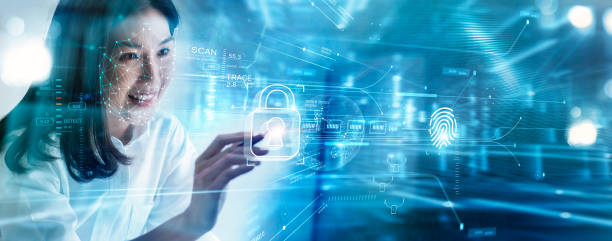
Biometric Face Scan Technology | A Solution To Fight Against Fraud Attacks
Initially, banks and other non-financial institutions use knowledge-based authentication and passwords. But now hackers can address answers to security questions through social media profiles such as the name of the mother of a peer. With the rapid advancements in technology, the risk of cybercrime has also increased. There have been more than 16 thousand cyber crimes worldwide from November 2021 to October 2022. Companies require a reliable solution to overcome the increasing cybercrimes. The best method for fraud prevention and data security is biometric authentication.
A decade ago, biometrics was considered a concept in science fiction movies, but now it is playing an important role in data security and protection. Companies are moving towards the use of biometric face scan solutions as it is more efficient and secure as compared to passwords or PINS. The biometric process helps organizations to identify the legitimacy of their clients as face scan identity of individuals. This blog post explores the role of biometric face scans in identifying fraudster attacks and making businesses secure.
Why Do Businesses Require Biometric Face Scan Technology?
Criminals use highly sophisticated techniques to forge their identities and bypass identity verification checks. They adopt edited audio and videos to justify their fake IDs. Deep learning techniques give fake videos and audio real human-like features. Imposters use various techniques for spoofing attacks, they use stolen images with some exploitation and perform various illicit activities. Companies using weak identification methods are unable to identify spoofing attacks. They cannot identify images that are manipulated with technology.
- Many criminals use 2D and 3D masks and build facial artefacts. Artificial intelligence and machine learning algorithms in face scanners identify spoofing attacks with robust mechanisms.
- In addition to 2D and 3D masks, many banks and financial institutions suffer losses due to deep fakes. Fraudsters use video and audio files with some alternation to perform various illicit activities. Many criminals change the background in automated videos and use sophisticated deep learning methods to give real effect.
biometrics facial recognition technology is the only solution to eliminate fraud attempts and verify clients through automatic AI and ML technology. Other authentication methods such as knowledge-based or passwords are not reliable. On-time passwords can be generated several times, and knowledge-based questions such as mother’s name, pet name, etc can also be accessed through various social means. Facial biometric solutions are preferred as they work along with human physiological features. These facial features cannot be stolen or replicated. Every individual possesses unique biological features.
Strengths Of Biometric Face Scanning Technology
- Biometric face scan works along with automated systems that are used to check an individual’s identity. It provides identity verification results in just a few seconds on the basis of facial features which include the bridge of the nose, spacing of the eyes, distance between chin and forehead, contour of lips, chin, and ears. Organizations using facial recognition scanner can verify the number of individuals in a short duration.
- The use of biometric face scanning technology enables organizations to develop a trustworthy relationship with their clients, which leads to business development. It grabs more clients onboard and enhances business revenue.
- Biometric face scanning provides a reliable solution regarding identity verification, automated AI mechanisms can identify spoofing attacks, fake images, and deep fakes. It provides firms security against every kind of fraud attempt such as money laundering, identity theft, and payment breaches.
How Does The Process of Biometric Face Scanning Work?
Biometric face scanning technology works in the following steps:
- Capture: Clients’ face cameras may be webcams or other biometric scanners; they capture face images and detect facial data through robust technological mechanisms.
- Analysis: AI and ML algorithms analyze detected faces through AI and ML mechanisms. Various facial features are analyzed to identify their variations and legitimacy.
- Conversion: After analysis, facial geometry is converted into digital face prints to process systematically.
- Storage: After the successful conversion of facial features into face prints, they are stored in electronic records to be accessed for further verification process.
- Verification: Face prints stored in electronic form are verified through various cross-matches. Individual identity is verified after a successful cross-matching of data in digital records with other ID documents. Many organizations can identify criminal records through government databases in which mugshots are stored.
Conclusion
Biometric face recognition technology enables organizations to get rid of fraud attempts through fake IDs. Robust AI and ML technology used in face scanners provides automated and authentic solutions regarding spoof detection. This technology helps organizations to get rid of lengthy verification processes and enhances customers’ experience. Frictionless biometric face scanning technology enhances business revenue with authentic clients onboard. It helps organizations overcome the risk of identity theft, financial terrorism, and data breaches. Moreover, the use of facial recognition scanners provides digital automated solutions and builds clients’ trust.
